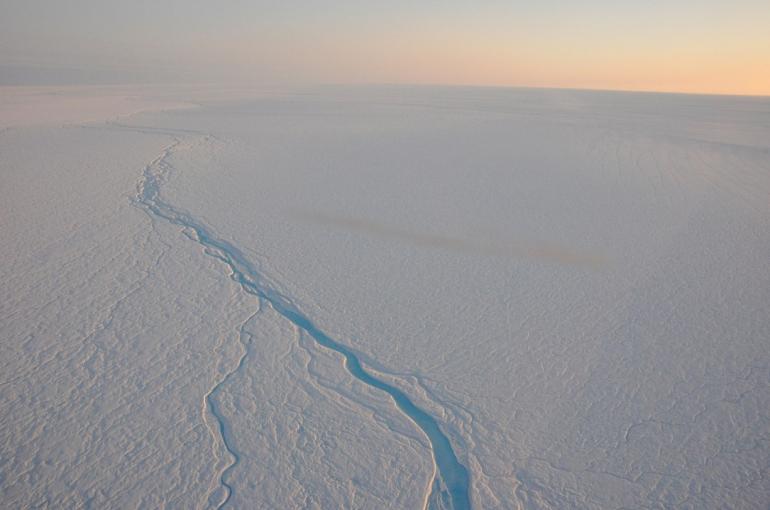Meltwater from Greenland ice sheet released faster
Meltwater from Greenland ice sheet is released faster due to ice formation near the surface
A new study of the so called firn layers of the Greenland ice sheet, published in Nature Climate Change, shows that the recent atmospheric warming are changing the near-surface firn layers ability to store meltwater, which can result in a faster release of meltwater from the ice sheet.
A new study published in Nature Climate Change by researchers from Denmark, the US and the Netherlands has found that the so called firn layers of the Greenland ice sheet interior are releasing meltwater at a faster rate than previously anticipated. The study shows, that the recent atmospheric warming are changing the near-surface firn layers’ ability to store meltwater, which is resulting in a faster release of meltwater from the ice sheet.
Read the Washington Post article on this research paper here.
FIRN CORES
“Basically our research shows that the firn reacts fast to a changing climate. Its ability to limit mass loss of the ice sheet by retaining meltwater could be smaller than previously assumed,” says Horst Machguth from the Geological Survey of Denmark and Greenland, who is the lead author of the study. The researchers investigated the impact of recent atmospheric warming on the structure of near-surface snow and ice layers, called firn, on the Greenland ice sheet. Over the course of three expeditions in 2012, 2013 and 2015 the researchers traversed several hundred kilometres of the ice sheet to map the structure of the firn layers with an ice-penetrating radar unit and by drilling regularly-spaced shallow firn cores.

SPONGE
Horst Machguth explains: “The near-surface of the large ice sheet interior is comprised of snow that is slowly being converted into glacier ice. This porous firn layer can be up to 80 m thick. Earlier research has shown that firn acts like a sponge, and stores meltwater percolating down from the ice sheet surface by refreezing it to form ice layers. But after the Greenland ice sheet was hit by a series of warm summers, it was unknown how the firn reacted to exceptional amounts of meltwater. Our research aimed to clarify whether the firn was indeed capable of retaining the meltwater, or whether the sponge had been overwhelmed.”
REFROZEN ICE
The scientists drilled several 20 m deep cores to sample the firn, also targeting sites where similar cores had been drilled 15 to 20 years ago. At many locations, a comparison of the new and old cores revealed that the amount of refrozen ice layers in the firn had indeed increased substantially over the past two decades, consistent with the sponge theory. This sponge-like behaviour, however, was not found everywhere. Cores drilled at lower elevations indicated that the recent exceptional meltwater production had only percolated to shallow depths within the firn, aggregating into massive ice layers directly below the ice sheet surface.
ICE LENSES
“It appears that the firn was overwhelmed by the melt to a degree where so many ice lenses had formed that they started to hinder percolation of further meltwater. Initially small ice lenses grew to form ice layers of several meters in thickness that act as a lid on top of otherwise sponge-like firn. “Surface meltwater wants to refreeze in firn locally, which it does at higher elevation, but at lower elevations it hits that lid of ice and is forced to stay at the surface where it cumulates.” Satellite imagery from recent summers shows that the meltwater then formed rivers on the surface that flow towards the margin of the ice sheet.
“In contrast to storing meltwater in porous firn, this mechanism increases runoff from the ice sheet and will lead to a faster decay of the ice sheet”, says Roderik van de Wal, researcher at IMAU.

